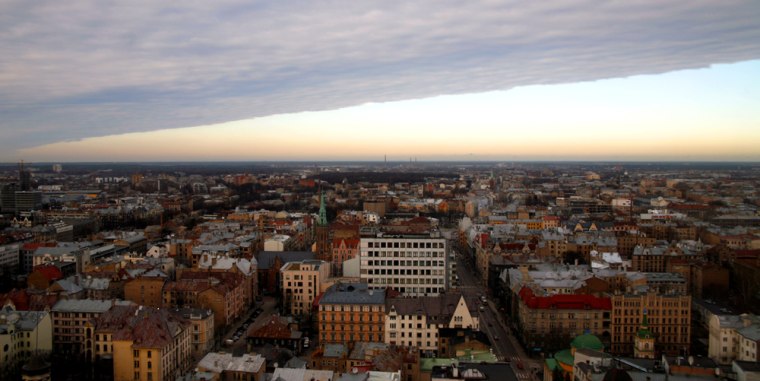RIGA, Latvia — Many of them are now called “non-citizens” in the countries of their birth, but the position of present-day Baltic Russians is partly a result of an earlier, different form of migration from a time when Estonia, Latvia and Lithuania composed part of the Soviet Union. These “non-citizens,” who still cannot travel to EU members Britain and Ireland without a visa, represent one of the EU’s thorniest and least-known issues.
After regaining independence in 1991, Estonia and Latvia granted citizenship to those residents who held national citizenship before Soviet domination during World War II, as well as their direct descendants. (Lithuania, which had a smaller Russian population, did not impose such stringent citizenship restrictions.)
People who moved to Estonia and Latvia — as well as their offspring — after 1940 could apply for citizenship after passing a naturalization test focusing on language and history.
By default, most of those forced to take the test were ethnic Russians. Russia’s government, the Council of Europe and some rights groups complained that the initial exams were unfairly difficult; the tests were later amended, but suspicions lingered.
Those who have not taken or not passed the citizenship test remain classified as official “non-citizens,” severely restricting their ability to work in other EU states.
Today, Russian-speakers make up nearly one-third of Latvia’s 2.3 million people; that figure rises to around one-half in the capital, Riga. Russians make up around 25 percent of Estonia’s 1.3 million people and 6 percent of Lithuania’s 3.5 million people.
Highly emotive issue
In Latvia and Estonia, Russian-speakers complain they face discrimination in jobs, housing and education. That resentment erupted in violence this spring, when Russian-speakers in Estonia protested the removal from Tallinn of a monument honoring Soviet soldiers.
Many Estonians and Latvians counter that Russians enjoyed institutional advantage and privilege for decades under Soviet rule, and now Moscow tries to exploit the issue for political leverage over its former republics, both of which are now members of NATO and EU. After all, they say, Russian-speakers can still move to Russia, whose own population is shrinking.
Russian is still widely spoken in Estonia's and Latvia’s urban areas, but it does not have legal status. (A bumbling reporter recently tried to use broken Russian to thank staffers at Latvia’s parliament — poor etiquette for a foreign visitor.)
Estonians and Latvians are proud that their national identities withstood half a century of Soviet rule but worry that EU immigration could lead to foreign-worker importation to ease their own labor shortage, thereby diluting their respective national characters.
But Latvian writer LaimaMuktupavela, who herself once worked as a mushroom picker in Ireland, asserted that through immigration, “the integration problem has been solved. There are no Latvians and no Russians. [In Ireland] everyone is an individual person from Latvia.”
